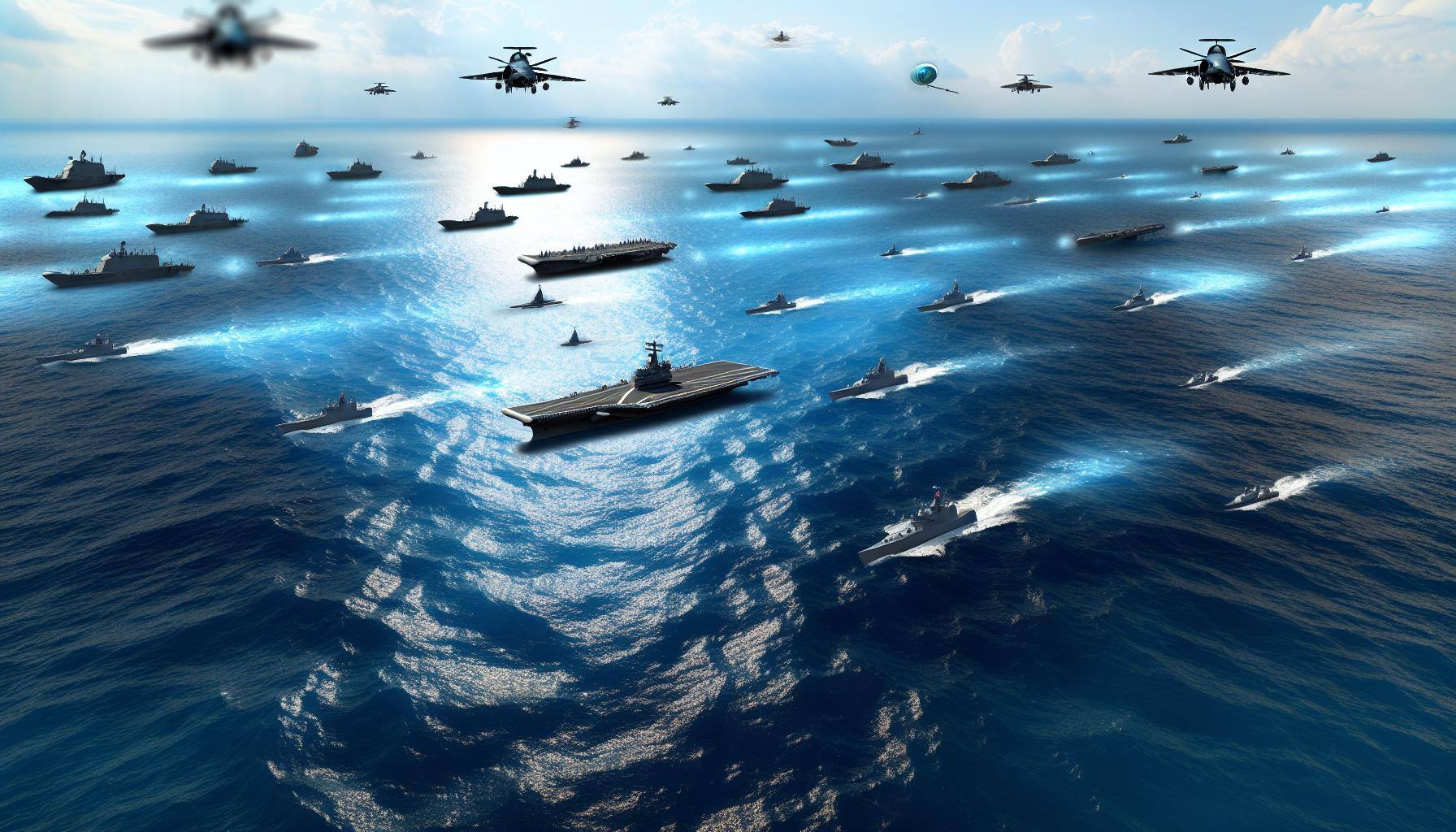The Indian Navy has established the Indian Ocean Region Information Fusion Centre (IFC-IOR) near Delhi as a pivotal element in enhancing maritime security and domain awareness in the Indian Ocean.
This state-of-the-art facility, inaugurated in December 2018 by Defence Minister Nirmala Sitharaman, represents a significant advancement in the Indian Navy’s strategic capabilities and reflects its commitment to fostering regional and global maritime security.
Historical Context and Strategic Importance
The Indian Ocean, covering nearly three-fourths of the Earth's surface, has emerged as a strategic zone critical to global geopolitics. The significance of maritime control in this region was underscored by historical figures such as Prime Minister Jawaharlal Nehru, who emphasized the importance of naval strength for India's security and independence. Similarly, Sardar K M Parrikar highlighted the strategic importance of the Indian Ocean for India’s future, echoing Admiral Alfred Thayer Mahan’s views on maritime dominance.
The Indian Navy's Evolution and Capabilities
The Indian Navy has evolved significantly, with its fleet now comprising 138 ships and submarines, including two aircraft carriers and 240 aerial assets. Key components of its arsenal include the BrahMos surface-to-surface missiles and Barak-8 air defense systems, as well as advanced radars like the M/F Star from Israel. The Navy operates two medium-sized carriers equipped with MIG-29K fighters and Sea Hawk MH60R helicopters, with future enhancements including 26 Rafale M fighters.
Maritime Security Challenges
The Indian Ocean faces various threats, including piracy, smuggling, and terrorism, compounded by technological advancements and increasing maritime traffic. The 2008 Mumbai terror attack exposed vulnerabilities in maritime security, prompting the establishment of the National Committee for Strengthening Maritime and Coastal Security (NCSMCS). The Information Management and Analysis Centre (IMAC) in Gurugram and the National Command Control Communication and Intelligence Network (NC3I) were pivotal in addressing these challenges.
IFC-IOR's Role and Achievements
The IFC-IOR has become a central hub for maritime domain awareness in the region, featuring 14 International Liaison Officers from partner nations including Australia, France, Japan, and the United States. This collaborative approach enhances information sharing, coordination, and response capabilities. The centre monitors maritime traffic, generates security updates, and provides a comprehensive maritime situational picture. It also collaborates with regional entities such as the Indian Ocean Commission (IOC) and other maritime fusion centres globally.
Technological Integration and Future Directions
The IFC-IOR leverages advanced technologies, including AI and machine learning, to enhance predictive capabilities and automate data analysis from various sources such as satellites and radars. These innovations are crucial for addressing maritime threats and environmental impacts, such as oil spills and illegal fishing. The centre also focuses on training and best practices to improve maritime security and safety.
Conclusion
The IFC-IOR exemplifies the Indian Navy's commitment to enhancing regional maritime security through international collaboration and advanced technology. By integrating a global network of partners and utilizing cutting-edge tools, the IFC-IOR plays a crucial role in ensuring maritime safety, environmental protection, and effective response to maritime threats. Its contributions extend to critical operations such as counter-piracy efforts and humanitarian missions, reinforcing its position as a key player in the strategic maritime domain.
Source: Eurasia Review





